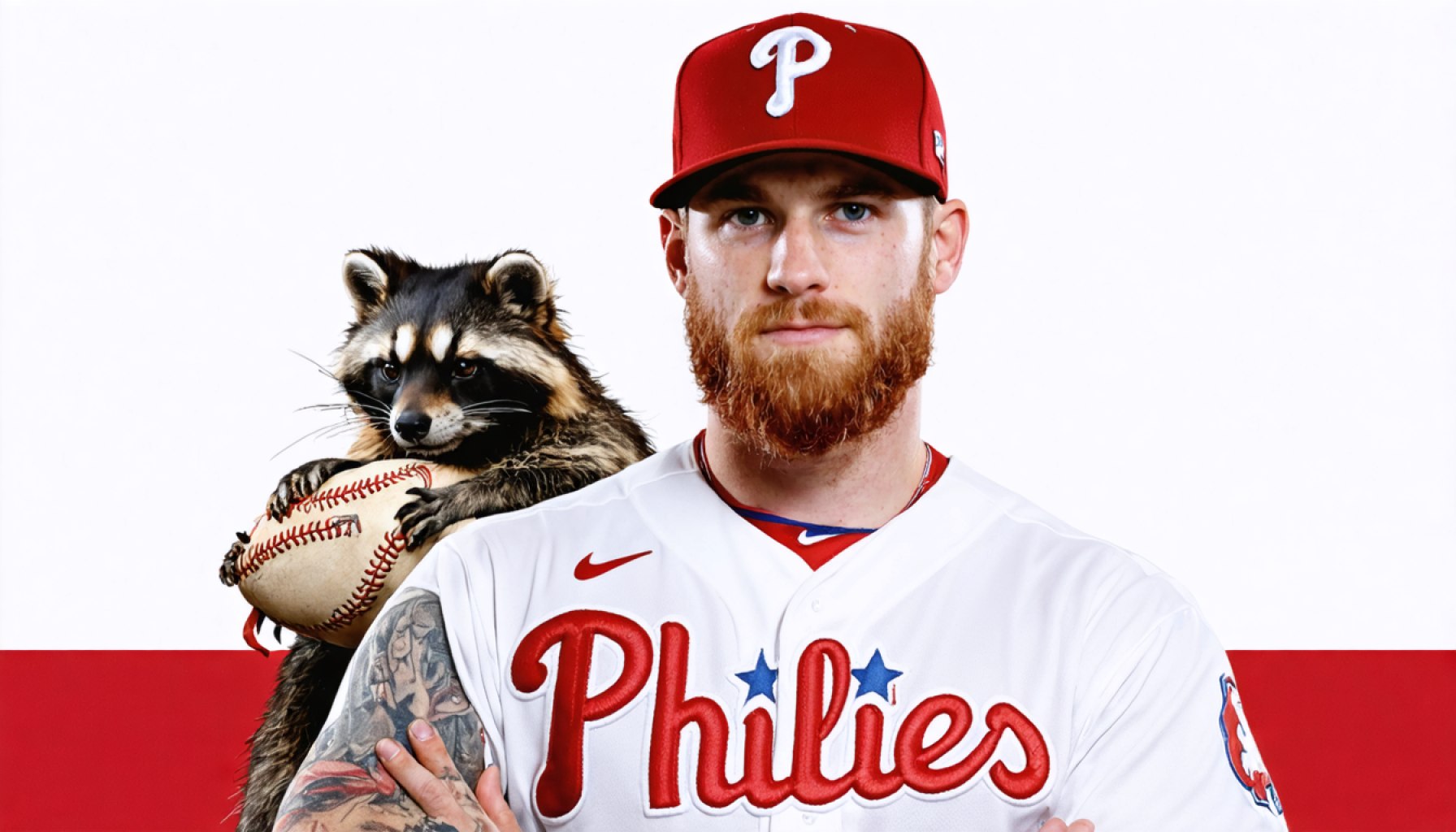- Bryce Harper’s new tattoo celebrates Philadelphia’s love for the Phillies, featuring the iconic Phillie Phanatic.
- Created by tattoo artist Hannah Matthews from Salt Lake City, the art embodies Harper’s playful and energetic persona.
- The tattoo enhances anticipation for the Phillies’ upcoming season and symbolizes the deep connection between athletes and fans.
- Harper’s visible tribute exemplifies team spirit, reinforcing his status as a dynamic symbol of the team’s enthusiasm.
- The tattoo serves as a vivid reminder of the emotional ties and shared symbols that unite sports communities.
A burst of vibrant greens and comical, googly eyes now peeks out from Bryce Harper’s arm, marking a playful tribute to the spirit of Philadelphia. The renowned Phillies slugger showcases not just his allegiance to baseball, but his infectious energy and unyielding charm through a striking new tattoo of the beloved Phillie Phanatic.
Crafted by the adept hands of Hannah Matthews, a talented tattoo artist hailing from Salt Lake City, this colorful homage captures the whimsical essence of the mascot that fans hold dear. Matthews marveled at her good fortune for having been chosen to create such an emblematic piece, translating Harper’s admiration for the green, fluffy icon into art that pulsates with personality.
As Phillies Spring Training games loom on the horizon, the dazzle of Harper’s new ink adds yet another thrilling dimension to the excitement of the upcoming season. While he gears up for Opening Day on March 27 against the Nationals, Harper wears his enthusiasm on his sleeve—literally.
For those keeping an eye on sports and trends, Harper’s vibrant tattoo speaks to a larger narrative: the profound bond between athlete and fandom, woven through shared symbols and iconic imagery. With each game, and every swing of his custom Phanatic bat, Harper is more than a player; he becomes a living emblem of team spirit. The takeaway is both simple and powerful—sometimes, the ties that bind us to our heroes are, quite literally, under the skin.
Unveiling the Fascinating World of Sports Tattoos: Bryce Harper’s Phillie Phanatic Ink Redefines Fan-Allegiance
How Tattoos Are Redefining Sports Culture
Bryce Harper’s new tattoo of the Phillie Phanatic is more than mere body art; it signifies a deeper connection within sports culture. This tattoo is a playful tribute to the spirit of Philadelphia and embodies Harper’s allegiance to both his team and loyal fanbase. This gesture of “wearing fandom on one’s sleeve” integrates the worlds of personal expression and sports enthusiasm.
Real-World Use Cases
Athletes frequently choose tattoos to symbolize personal or career milestones, role models, or team ambitions. For instance, LeBron James highlights motivation and inspiration through various tattoos that depict his mottoes and influences. Similarly, Harper’s ink serves as a constant source of motivation and emotional connection to the game and fans.
Market Trends and Industry Forecasts
The tattoo industry is booming, with reports by Grand View Research predicting that the global tattoo market size will reach $3.55 billion by 2027. A significant portion of this growth is driven by celebrities and athletes who influence public perception, making tattoos mainstream. As athletes like Bryce Harper embrace this trend, the market for sporty tattoos is likely to expand further.
Features, Specs & Pricing in the Tattoo Industry
Pricing for tattoos varies significantly depending on the tattoo’s complexity, size, and the artist’s fame. Custom tattoos like Harper’s, crafted by renowned artists like Hannah Matthews, can command higher prices due to their bespoke nature and the expertise required. While simpler designs might start at $50-$100, larger, intricate tattoos can range from several hundred to thousands of dollars.
Security & Sustainability Concerns
With the popularity of tattoos rising, concerns arise over ink safety and environmental sustainability. Ensuring the use of FDA-approved inks and practices that minimize ecological footprints are important considerations within the industry. Trained and reputable artists play a crucial role in maintaining health standards and reducing environmental impact.
Pros & Cons Overview
Pros:
1. Personal Expression: Tattoos allow athletes to display personal beliefs, history, and team loyalty.
2. Cultural Shift: They contribute to the cultural narrative of sports and personal branding.
3. Connection to Fans: Tattoos can strengthen the athlete-fan relationship.
Cons:
1. Permanent Commitment: Tattoos are difficult and expensive to remove, requiring careful consideration before choosing.
2. Potential Regret: A design that seemed meaningful at one time may become less relevant.
3. Professional Implications: In some sports or cultures, tattoos may carry stigma or require cover-up.
Controversies & Limitations
Despite growing acceptance, tattoos sometimes face criticism for being considered unprofessional in certain circles. Athletes must occasionally navigate sports rules about how tattoos are displayed during games or photo ops. Additionally, cultural sensitivity around tattoo imagery must be considered.
Insights & Recommendations
For those considering getting tattoos to showcase fan loyalty:
– Research Thoroughly: Choose a reputable artist known for their expertise and hygiene practices.
– Consider the Meaning: Ensure the tattoo holds lasting significance to avoid future regret.
– Discuss with the Artist: Collaborate on design ideas that balance personal expression with tastefulness.
As tattooing becomes increasingly popular among sports figures, fans should embrace them as marks of identity and allegiance. Emulate your favorite athlete’s spirit, but make it uniquely yours.
For more insights into trends and imagery in the world of sports, visit the official MLB domain.
